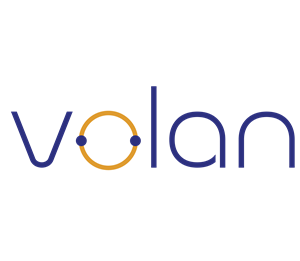RTLS Glossary: Industry 4.0 Terminology Defined
RTLS is used across many industries with specific applications such as workforce optimization and automatic rostering. We’ve compiled some of the most important terms related to Real-Time Location Services (RTLS) below.
AES-256
Advanced Encryption Standard is NSA approved and is the worldwide standard for the encryption of electronic data. AES-256 uses the longest available key length of 256-bits to encrypt and decrypt communications.
Active RFID
Active RFID systems use battery-powered RFID tags that broadcast their own location using two main radio frequencies, 433 MHz and 2.45 GHz.
Application Programming Interface (API)
An application programming interface is a set of definitions and protocols for building and integrating application software. This allows for connection between computer applications and seamless integrations with third-party applications.
Bluetooth low-energy (BLE)
BLE is a 2.4 GHz frequency low-power band network technology. BLE is used in RTLS to transmit location and status data between devices.
Digital Twin
A virtual representation of physical objects and processes. Digital twins receive data from sensors in the physical environment to create real-time data and insights. The virtual representation acts as a digital model to run simulations, study performance issues and optimize operations. These valuable insights can then be applied back to the physical objects and processes.
Geofence
A geofence is a virtual boundary for a real-world geographic area, enabling the precise positioning of people and assets within the virtual boundary. Administrators can receive alerts when people enter and exit geofenced zones and view exactly who is on-site.
Global Navigation Satellite System (GNSS/GPS)
Most commonly known as the Global Positioning System (GPS), a global navigation satellite system transmits time signals along a line of sight by radio to determine location.
Industry 4.0
Also referred to as the Fourth Industrial Revolution, it is the integration of smart digital technology and manufacturing and places an emphasis on automation, machine learning, and real-time data.
Internet of Things (IoT)
Physical objects that are embedded with sensors, processing ability, software, and other technologies that connect and exchange data with other devices.
Mesh Network
A mesh network is a network of devices that are linked together in a dynamic, non-hierarchical topology. These networks are set up to efficiently route data to provide a consistent connection throughout a physical space. A mesh network reliably communicates along devices until it reaches its destination, reconfiguring itself around broken devices with self-healing algorithms.
Passive RFID
Passive RFID systems use tags with no internal power source to determine location. Passive RFID tags are powered by RFID readers, which send electromagnetic waves that induce a current in the tag’s antenna.
Personally Identifiable Information (PII)
Personally identifiable information is any information that can be used to trace or distinguish an individual. These include direct identifiers such as name, social security number, or mailing address. Quasi-identifiers may not recognize a person uniquely but be combined with other quasi-identifiers to successfully recognize an individual. Quasi-identifiers may include the date of birth, gender, and area code. It is critical to protect both direct identifiers and quasi-identifiers to ensure the privacy of your employees.
Point Cloud
Point clouds are datasets that represent physical objects or space. Digital 3D representations of physical space are made of millions of individual measurement points, each one with an x, y, and z coordinate. Point clouds can create operational 3D models, known as Digital Twins.
Real-time location system (RTLS)
An RTLS is a system that accurately determines an item or person’s location. In other words, it is a positioning system akin to GPS for the indoors.
Received signal strength indicator (RSSI)
RSSI is the relative received signal strength in a wireless environment.
Ultra-wideband (UWB)
UWB is a low-power, high-bandwidth wireless communication that occurs over a wide range of frequencies.
Learn if RTLS is the right technology to power the Industry 4.0 solutions you need. Book a demo with our team to see it for yourself



